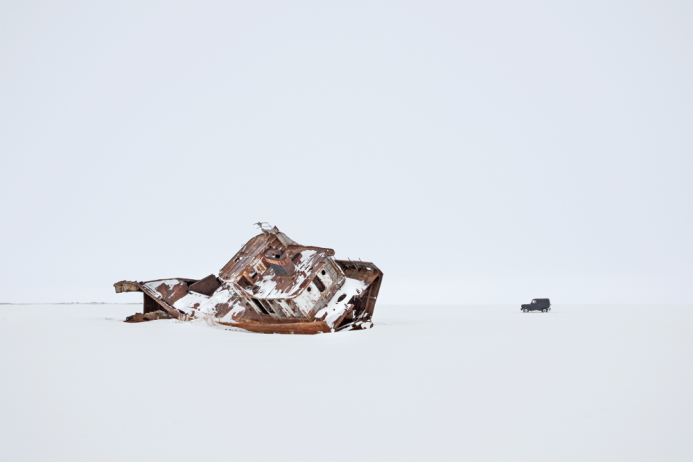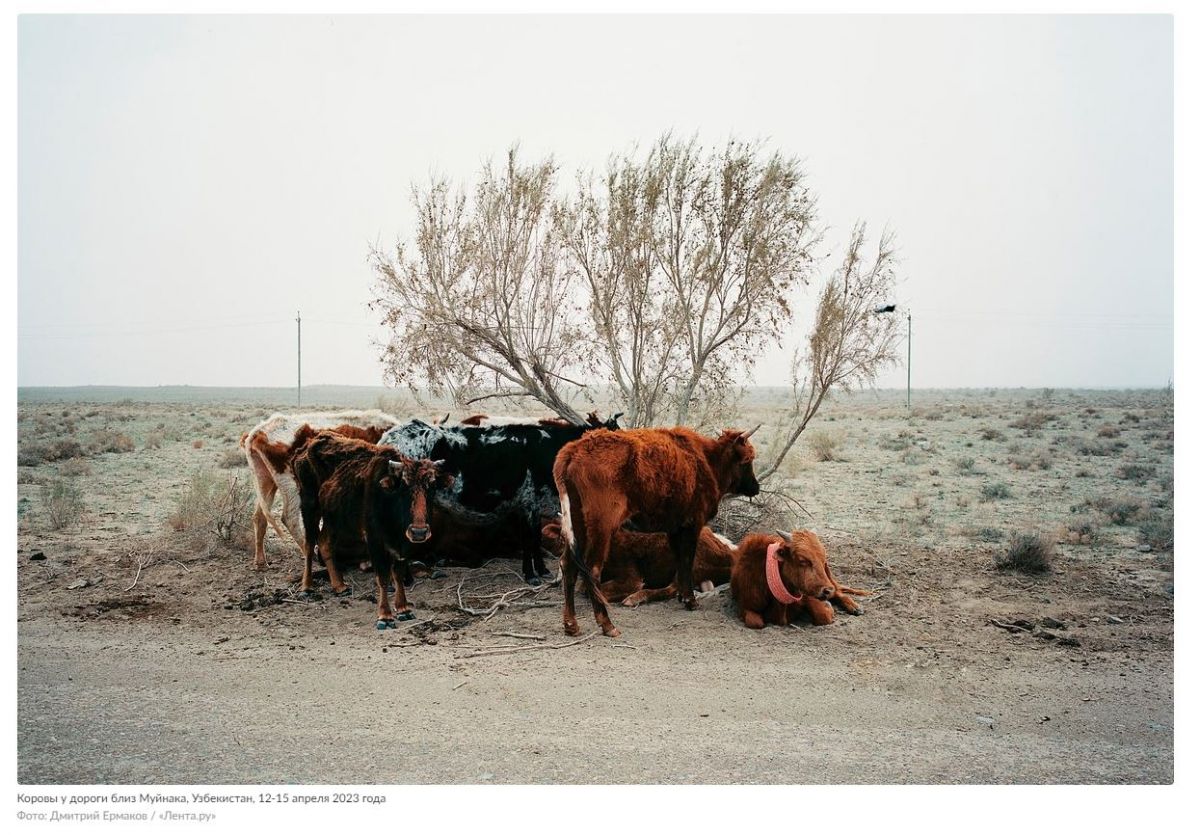March 5, 2018
For the past forty years, the Aral Sea, located at the border between Kazakhstan and Uzbekistan, was reduced in size catastrophically. And this was one of the largest scale environmental catastrophes of 20 century. Yusup Kamalov, a wind energy specialist from the Academy of Sciences of Uzbekistan, is the Head of The Aral andAmu-Darya Protection Union. Several years ago, he said the following about the then Aral scenery: “If global apocalypse will occur someday, only the Kara-Kalpak people will survive, for we are aware what apocalypse is”.
 In 1960, the Aral Sea, the main water sources of which were the waters of the Amy-Darya and Sir-Darya Rivers, covered some 67 300 square kilometres; this is two and a half times larger than the territory of Belgium. There were many flourishing towns and villages along its shores that made their living, partly, from fishing. However, starting from 1930’s the Soviet government decided to adapt the vast steppe areas of Kazakhstan and Uzbekistan for rural needs – cropping of grain and cotton. The Amu-Darya and Sir-Darya River waters were diverted into extensive network of irrigation canals for watering primarily of cotton. In 1989, the Aral Sea got divided into two isolated aquifers – Northern (Small) and Southern (Larger) Aral Sea. In early 1990’s satellite images of the Aral Sea were spread all over the world. They showed some corrugated vessels eroded with rust with greenish colour fluid.
In 1960, the Aral Sea, the main water sources of which were the waters of the Amy-Darya and Sir-Darya Rivers, covered some 67 300 square kilometres; this is two and a half times larger than the territory of Belgium. There were many flourishing towns and villages along its shores that made their living, partly, from fishing. However, starting from 1930’s the Soviet government decided to adapt the vast steppe areas of Kazakhstan and Uzbekistan for rural needs – cropping of grain and cotton. The Amu-Darya and Sir-Darya River waters were diverted into extensive network of irrigation canals for watering primarily of cotton. In 1989, the Aral Sea got divided into two isolated aquifers – Northern (Small) and Southern (Larger) Aral Sea. In early 1990’s satellite images of the Aral Sea were spread all over the world. They showed some corrugated vessels eroded with rust with greenish colour fluid.
 Numerous tourists visit the Aral Sea every year and the tour guides show them the outcomes of the Aral catastrophe, which has no analogues in the history of mankind. Some 12 fishing ships, which used to cross the high-water sea, lay here in rust. In 2016, local population collected almost all metal scrap to earn at least some little money. Only three ship frames are still there.
Numerous tourists visit the Aral Sea every year and the tour guides show them the outcomes of the Aral catastrophe, which has no analogues in the history of mankind. Some 12 fishing ships, which used to cross the high-water sea, lay here in rust. In 2016, local population collected almost all metal scrap to earn at least some little money. Only three ship frames are still there.
For the past decade, world politicians finally decided to start resolving this environmental catastrophe. The World Bank and the Government of Kazakhstan hope to give the Aral Sea a second chance. Professionals think that the Larger Aral Sea has been lost for humanity for good. But the Northern part with its adjacent little lakes can be rescued. The 13 kilometre long Kokaralsky dam, built in 2005 and funded by the World Bank and the Government of Kazakhstan, made it possible for the Smaller Aral to regain 50 per cent of its area from the sandy desert. The level of water, which was 18 metres in 2004, rose to the level of 42 m. Currently, one can see a vast bright-marine colour water expanse that has welcomed back both: many species of fish and hundreds of pelicans. The main port at the Aral Sea, historically known and Aralsk, currently – Aral, can regain its former significance, seemingly lost for good. Big waters came back to it as well – to the northern end of the Smaller Aral. Of course, the main objective of the President of Kazakhstan Nursultan Nazarbaev is development of Astana. He dreams of turning Astana into the most influential capital city in Central Asia.
The small population of a tiny village of Tastubek, located in 90 kilometres from Aralsk and in 11 hours’ drive along snowy roads, are preparing for a long “wintering. Here, February temperatures may drop below minus 20 degrees Celsius.
The Kazakh desert nomad’s tents were replaced by stone wall houses, which are heated with fuel, but the painted floors in these houses are covered with carpets like in the ancient days. And the Tastubek people are overwhelmingly happy when the fresh water tanker manages to arrive to their settlement though snow banks. Rare tourists are brave enough to visit this place in winter. But they should. The boundless beauty of the icebound lake is so impressive. However, for local people, the Small Aral is primarily the main source of food. After the Kokaralsky dam was built, the big fish also returned. The paradise period for fishing – spring and summer - ample amounts of fish. While in winter, this job not only diversifies the daily routine, but also enriches the food ration.
People set their fishing nets along the full length of the shore. Of course, at the end of winter – early spring the near shore ice cover is fragile and unreliable. It is dangerous to drive on a car or a bicycle. Two people died at the Smaller Aral for the past two years. It was either for reckless behaviour at the steering wheels – inability to cope with car driving at high speed driving on ice or due to alcohol problems.
Long winters seem scaring. For visitors. But they do not scare the Tastubek population either morally or physically. They do not wrap themselves up, they clothe simply to be comfortable.
Only economic life slows down for them. Some Tastubek fishermen do not like summer for its heat, and spring for its period of impassable roads. In 2010, the village was finally electrified and now all people watch satellite TV programmes in their sitting rooms – top entertainment programmes from Astana. Middle-aged people are quite happy. While the young people need everything that all youth need all over the world: get connected to Internet to log on to Facebook or Instagram. And if it is possible to do it via satellite communications, then they wouldn’t care if freshwater were delivered or what is broadcast on Kazakh TV.
The small village of Tastubek – is a quiet fishing harbour, where frost may drop below minus 35 degrees in winter months. And Tastubek fishermen and cattle breeders are living and surviving in this borderless beauty of snow and ice – of the desert and lake.
Author – Didier Biset
Translated by Mukhiddin Ganiev
Source http://www.geo.ru/putesestvia/231997-beskonecnaa-zima-arala